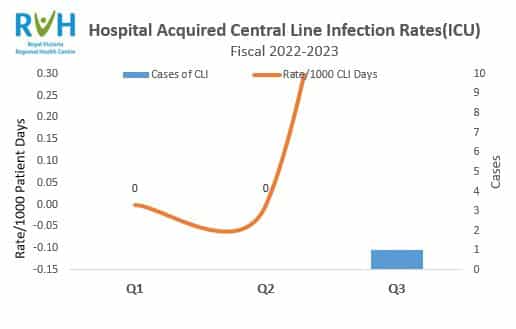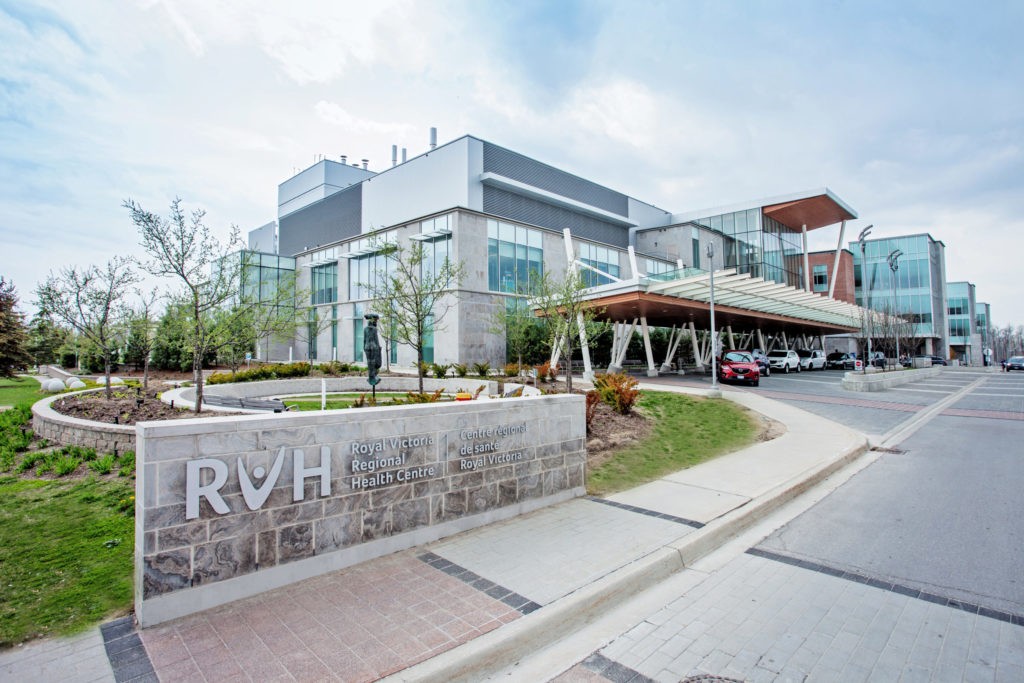
| Q1 | Q2 | Q3 | Q4 | |
| Cases of CLI | 0 | 0 | 1 | |
| Quarterly Rate/1000 CLI Days | 0 | 0 | 1.37 |
Why focus on CLI-BSI?
The public reporting of our CLI rates is not intended to serve as a measure for hospitals to compare themselves against other organizations, or for the public to use as a measure of where to seek care. A high number of CLIs in a quarterly period does not necessarily mean that a hospital is “unsafe”. That is why it is vital that the rates are viewed in the context of other performance indicators. That said, the analysis of our CLI rates over time will certainly provide us with helpful information that we can use to make quality improvements in our organization.
Public reporting of our hospital’s CLI rates will allow the Royal Victoria Hospital to establish a baseline from which we can then track our rates over time. If we feel our rates have risen above our baseline, we can look internally at our hospital’s processes, identify areas for improvement, and implement strategies to reduce the incidence of these infections in our organization.
Publicly reporting CLI rates and other indicators is another, helpful measure to ensure the care provided to our patients is even safer, and improves over time.
How is the CLI-BSI Indicator Calculated?
All hospitals with ICUs required to report into the Critical Care Information System (CCIS) – a centralized data collection system where hospitals report a variety of critical care information – must publicly report the CLI indicator data. Only hospitals with an ICU are publicly reporting their CLI rates. This is because patients in the ICU are more likely to have a central line in place. These hospitals are considered “eligible” for CLI-BSI reporting.
These Ontario hospitals are posting their quarterly CLI rate and case count for those infections acquired in their facility, using the following formula:
total # of ICU related BSIs after 48 hours of central line placement x 1000
total # of central line days for ICU patients 18 years and older
Patient Safety at the Royal Victoria Regional Health Centre
Patient safety remains the most important priority for the Royal Victoria Regional Health Centre and this involves ensuring that patients are not at risk for contracting healthcare-associated infections.
We have a number of practices in place to help prevent and control infections, including a comprehensive hand hygiene program. As of April 30, 2009, all Ontario hospitals are required to post quarterly CLI-BSI rates to further promote accountability and transparency within the health system.
RVH strongly supports the provincial government’s new public reporting initiative because we believe it will inspire improved performance, enhance patient safety, and strengthen the public’s confidence in Ontario’s hospitals. Public reporting of CLI-BSI and other indicators is another, helpful measure to ensure the care provided to our patients is even safer, and improves over time.
What can patients do to help reduce their chances of infection?
Patients should always follow instructions given to them by your health care team.
Frequent hand cleaning is another way to prevent the spread of infection. Hand hygiene involves everyone in the health centre, including patients and families.
For more patient – specific information, please click the links below:

